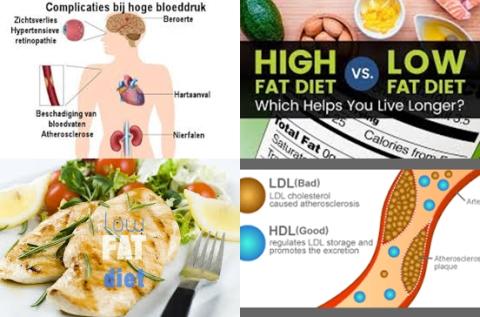
Objectives:
Elevated cholesterol has been linked to cardiovascular disease in adults and preclinical markers of atherosclerosis in children, thus reducing saturated (SFA) and trans-fatty acids (TFA) intake from an early age may help to reduce cholesterol and the risk of cardiovascular disease later in life. The World Health Organization (WHO) is currently updating its guidance on SFA and TFA intake in adults and children. Therefore, this review article (meta-analysis) has been conducted.
Does a diet with low saturated fatty acids reduce cholesterol and blood pressure in children and adolescents between 2 to 19 years of age?
Study design:
This review article included 8 RCTs (5 trials had a duration of 1 year and 3 had a duration of ≥ 1year with a total of 2,430 individual children and adolescents between 2 to 19 years of age) and 3 cohort studies.
Minimum duration was 13 days for RCTs and one year for cohort studies.
Saturated fatty acids intake was assessed using 24hr dietary recalls in 4 trials, 3-day diet records in 3 trials and food frequency questionnaires and/or checklists in 2 trials.
No trials were identified meeting the inclusion criteria for trans-fatty acids.
Publication bias was not assessed as the number of trials found was not sufficient to conduct funnel plot analyses for any outcome measure.
Results and conclusions:
The investigators found compared with control diets, there was a highly statistically significant effect of reduced saturated fatty acids intake on total cholesterol [MD = -0.16 mmol/L, 95% CI = -0.25 to -0.07, I2 = 64%], LDL cholesterol [MD = -0.13 mmol/L, 95% CI = -0.22 to -0.03, I2 = 77%] and diastolic blood pressure [MD = -1.45 mmol/L, 95% CI = -2.34 to -0.56].
The effects on cholesterol were greatest among those in which saturated fatty acids was replaced primarily with PUFA or MUFA and when the intervention group achieved a reduction in saturated fatty acids to below 10% of total energy intake.
The investigators found subgroup analysis of the effect of the initial lipid status of the participants showed a significantly different effect of saturated fatty acids reduction on total cholesterol [p = 0.05] between trials involving normolipidaemic/mixed status children [MD -0.21 mmol/L, 95% CI = -0.31 to -0.12] vs hyperlipidaemic children [MD = -0.08 mmol/L, 95% CI = -0.15 to -0.01].
The investigators found subgroup analysis of the effect of the initial lipid status of the participants showed the reduction in LDL cholesterol (bad cholesterol) was greater among the trials conducted in normolipidaemic/mixed status [MD -0.21 mmol/L, 95% CI = -0.30 to -0.13] vs hyperlipidaemic children [MD = -0.02 mmol/L, 95% CI = -0.14 to -0.11].
The investigators found there were no significant associations observed for HDL cholesterol (good cholesterol), triglycerides or apolipoproteins A1 or B.
The investigators found there were no significant associations observed between reduced saturated fatty acids intake and weight, height, body mass index (BMI) or waist circumference.
The investigators found there was no evidence of adverse effects of reducing saturated fatty acids intake in children on micronutrient intakes, cognitive development or sexual maturation in the small number of trials reporting these outcomes.
The investigators concluded a diet with low saturated fatty acids reduces total cholesterol, LDL cholesterol and diastolic blood pressure in children and adolescents between 2 to 19 years of age without evidence of adverse effects on growth and development. The greatest effect on cholesterol occurred when saturated fatty acids was replaced with PUFA or a mixture of PUFA/MUFA and when saturated fatty acids intake was less than 10% of total energy intake. Therefore, dietary guidelines for children and adolescents should continue to recommend diets low in saturated fat.
Original title:
Health effects of saturated and trans-fatty acid intake in children and adolescents: Systematic review and meta-analysis by Morenga L and Montez JM.
Link:
http://journals.plos.org/plosone/article?id=10.1371/journal.pone.0186672
Additional information of El Mondo:
Find more information/studies on fat consumption, body mass index, hypertension, cholesterol and cardiovascular diseases right here.
A diet with saturated fatty acids intake less than 10% of total energy intake is a diet with less than 10 En% saturated fat.
A diet with less than 10 En% saturated fat is a diet that is largely made up of meals/products with less than 10 En% saturated fat. Practically, this means that all meals/products that you eat on a daily basis should on average contain less than 10 En% saturated fat. Check here which products contain less than 10 En% saturated fat.